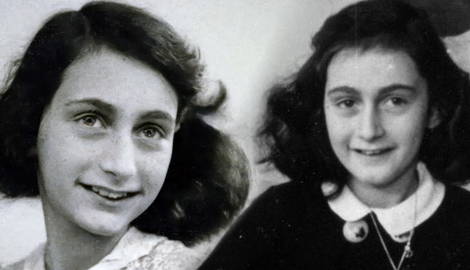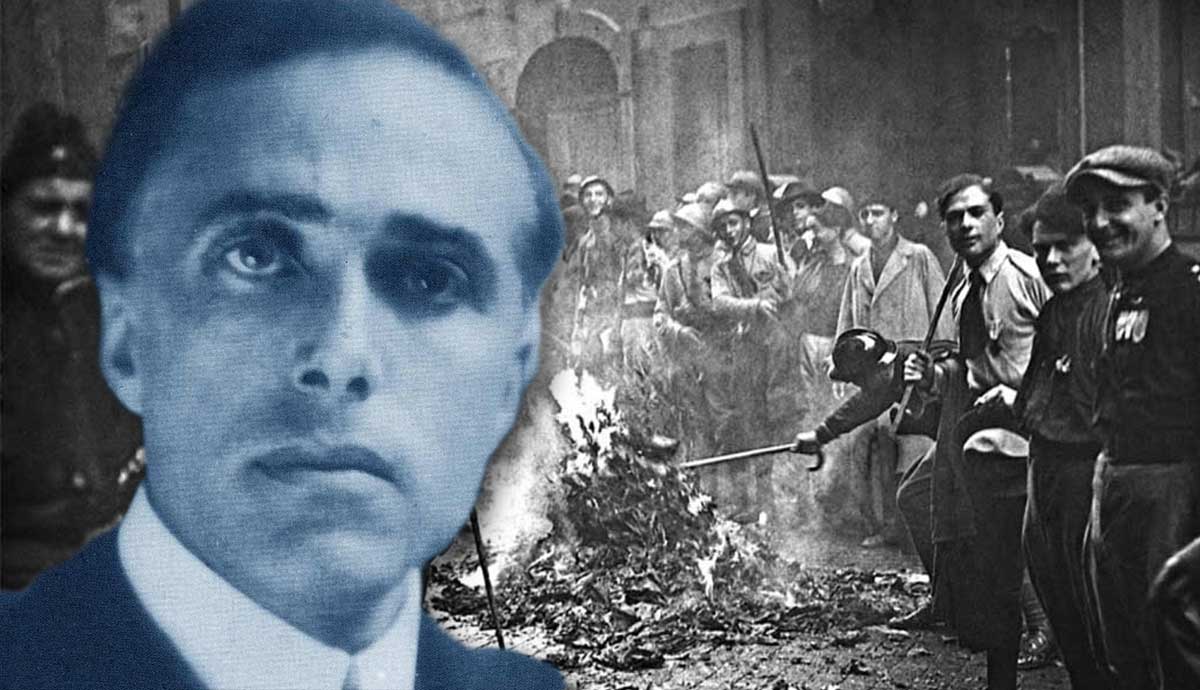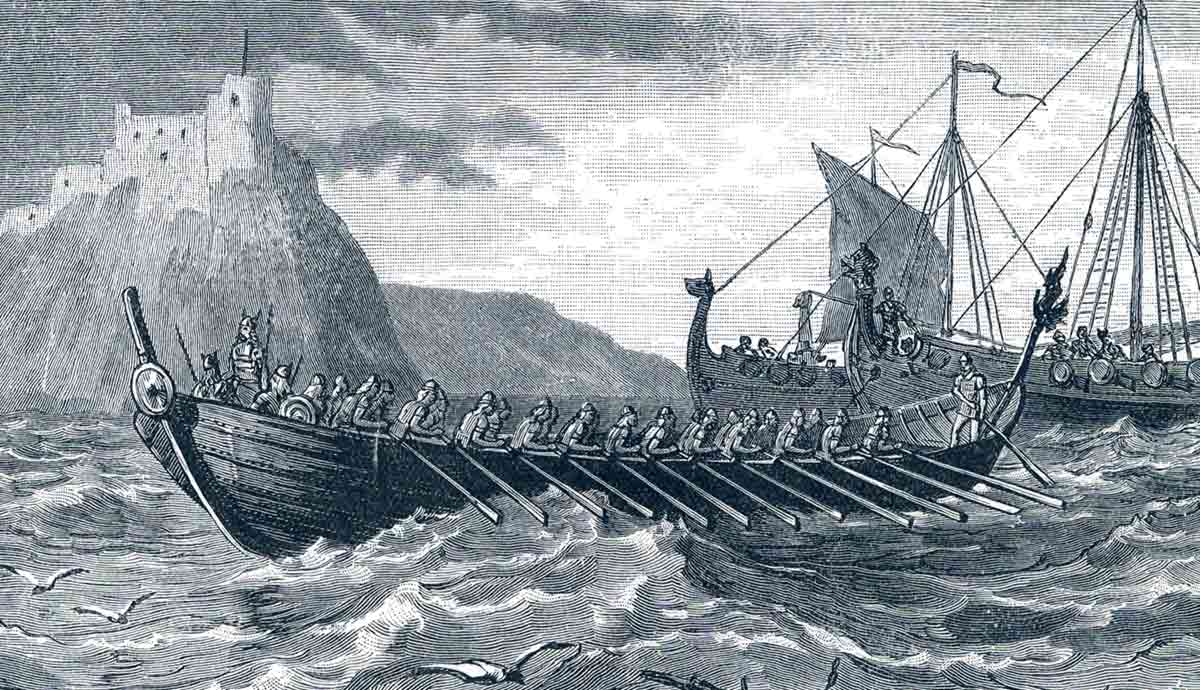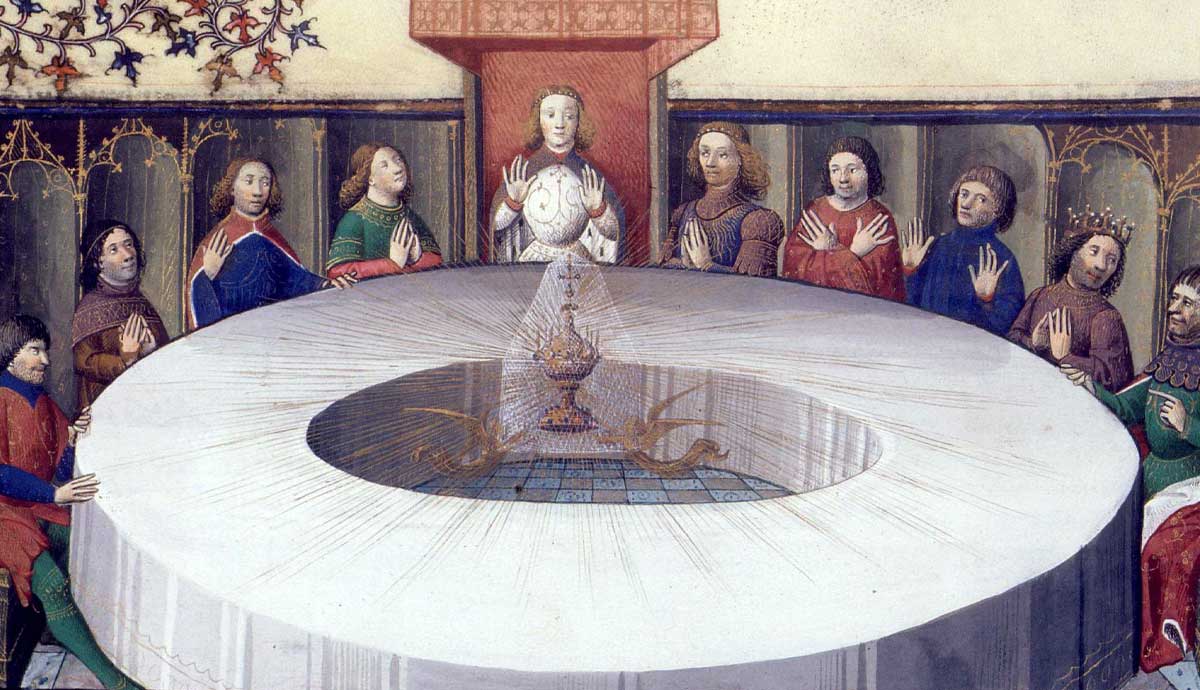
On August 4, 1944, a group of German soldiers stormed into the premises of the Frank family’s business in Amsterdam. During the search, the soldiers discovered a secret annex behind a bookcase, arresting the eight people who had been hiding there for two years. Among them was the 15-year-old Anne Frank. Before her capture, Anne documented her life as a young Jewish girl in the Nazi-occupied Netherlands in a diary. After her death, her father published Anne’s diary. It soon became one of the most famous accounts of the Holocaust.
Who Was Anne Frank?

On June 12, 1942, Anne Frank, then a 13-year-old teenager, penned her first diary entry. “I hope I will be able to confide everything to you, as I have never been able to confide in anyone, and I hope you will be a great source of comfort and support,” wrote Anne. She had received the plaid diary as a birthday present. By that time, Anne Frank had been living in Amsterdam for more than ten years.
Like many other German Jews, Otto Frank had decided to leave Germany after Adolf Hitler seized power in 1933. Otto, the son of a wealthy bank owner, had briefly worked in Amsterdam after the end of World War I. In the face of economic hardships and growing Nazi antisemitism, he and his wife Edith hoped that their family would find safety in the Netherlands, a country that had maintained its neutrality during the war.

After establishing his business, Otto brought his wife and two young daughters to Amsterdam in early 1933. While his pectin firm, Opekta, initially struggled to take off, Anne and Margot, her older sister, soon felt at home in the new country. Anne was enrolled at the capital’s Montessori school, where she learned Dutch and made new friends.
Anne, a lively and extroverted teenager, described in her diary entries her (mis)adventures at school, where she often got in trouble for talking too much. “Mr. Keesing … was mad at me for the longest time because I talked so much. After several warnings, he assigned me extra homework. An essay on the subject ‘A Chatterbox,’” she confided to her imaginary friend Kitty.
Outside school, Anne also enjoyed playing ping-pong with her friends and going to ice cream parlors, where the teenagers would usually “manage to find a few generous young men of our acquaintance or an admirer to offer us more ice cream than we could eat in a week.”
Anne’s life suddenly changed in the summer of 1942 when her sister received a letter from the Nazi authorities informing her she would be deported to a work camp in Germany. Suspicious of the Nazis’ real intentions, Anna’s family went into hiding.
When Was Anne Frank Born?

Despite her attempts to enjoy her time with friends and family, Anne was well aware of the Third Reich’s antisemitic persecution. “Our lives were not without anxiety, since our relatives in Germany were suffering under Hitler’s anti-Jewish laws,” she wrote in June 1942.
Born on June 12, 1929, in Frankfurt am Main, Anne was only four years old when Adolf Hitler became chancellor of Germany, introducing increasingly harsh antisemitic measures. In 1938, following the nationwide anti-Jewish pogrom known as Kristallnacht, two of her maternal uncles immigrated to the United States.
While German Jews faced widespread persecution, Anne and her family were initially able to lead normal lives in Amsterdam. Their freedom lasted until 1940, when Germany invaded the Netherlands. On May 14, the Dutch army surrendered to the seemingly unstoppable Wehrmacht. In the following months, the Nazi-controlled government, led by Arthur Seyss Inquart, introduced the Third Reich’s antisemitic legislation in the newly occupied country.

“Our freedom was severely restricted by a series of anti-Jewish decrees,” recalled Anne in her diary, listing all the restrictions the Nazi authorities used to exclude Jews from Dutch society: “Jews were required to wear a yellow star; Jews were required to turn in their bicycles; Jews were forbidden to use street-cars; Jews were forbidden to ride in cars, even their own; … Jews were forbidden to attend theaters, movies or any other forms of entertainment; … Jews were forbidden to visit Christians in their homes.”
As a result of the antisemitic laws, Otto Frank was no longer allowed to own a business. To prevent the Nazi authorities from seizing his company, he transferred ownership of the firm to a non-Jewish friend. Meanwhile, the occupying forces began to round up Dutch Jews to deport them to concentration camps.
Fearing for his family’s safety, Otto started devising a plan. “A few days ago, as we were taking a stroll around our neighborhood square, Father began to talk about going into hiding,” wrote Anne on July 5, 1942. “Oh, may these somber words not come true for as long as possible,” she commented. Despite her hopes, Anne annotated the following diary entry from her hiding place three days later.
What Happened to Anne Frank?

The Frank family went into hiding on July 6, 1942. “So there we were, Father, Mother and I, walking in the pouring rain, each of us with a schoolbag and a shopping bag filled to the brim with the most varied assortment of items,” recalled Anne in her diary entry addressed to her imaginary friend Kitty.
Before resorting to hiding his family in a “secret annex” of his company at Prinsengracht 263, Otto had tried to emigrate to the United States. However, low immigration quotas, red tape, and the destruction of the American consulate during the bombardment of Rotterdam thwarted his efforts. Even the connections of his friend Nathan Strauss, a US politician whom Otto had befriended at Heidelberg University, could not expedite the Franks’ visa application.
When Otto made a last desperate attempt to reach the US via Cuba, it was already too late, as the American government had suspended all transatlantic traffic following the Japanese attack on Pearl Harbor. As a result, in the spring of 1942, Otto began furbishing the “secret annex.” Before going into hiding, the Frank family left behind a false trail, leading the Nazi authorities to believe they had escaped to Switzerland.
Shortly after they had moved to the annex, Hermann van Pels, Otto’s business partner, and his family joined the Franks in the secret apartment. In November 1942, Fritz Pfeffer, a Jewish dentist, also hid in Otto’s business premises. A group of non-Jewish friends, including Miep Gies (Otto’s secretary), helped them by bringing them food and other supplies.

While hiding, Anne continued to record her daily life and observations in her diary. Alternating between fear and optimism about the future, the teenager described her frustration about the lack of privacy, her crush on Peter van Pels, impressions about her emerging sexuality, and reflections on personal growth. The forced proximity often led to arguments between the eight inhabitants of the secret annex. In her diary, Anne also wrote about her frequent clashes with her mother and sister.
While the group was physically cut off from the outside world, the “helpers” (as Anne called them in her diary) and their illegal radio allowed them to be informed about the war and persecution happening in Europe. “It’s really a wonder that I haven’t dropped all my ideals. … Yet, I keep them because despite everything I still believe that people are really good at heart. I simply can’t build up my hopes on a foundation consisting of confusion, misery, and death, I see the world gradually being turned into a wilderness, I hear the ever approaching thunder, which will destroy us, too,” mused Anne in July 1944.

On August 4, 1944, Anne’s worst fear came true. A group of soldiers led by SS-Hauptscharführer Karl Josef Silberbauer burst into the building. During their search, the officers discovered the secret annex behind a revolving bookcase. “Suddenly someone came running up the stairs and then the door opened and there was a man right in front of us with a pistol in his hand. Downstairs they were all gathered. My wife, the children, and the Van Pels family all stood there with their hands up in the air,” later recalled Otto.
The Franks, van Pels, and Fritz Pfeffer were all arrested. When the Nazi officers hastily packed their valuables in suitcases, Anne’s diary and assorted papers were left behind, scattered on the floor. Two helpers were also arrested.
How & When Did Anne Frank & Her Family Die?

After their arrest, Anne and the others were questioned by the Nazi Secret Service, the Sicherheitsdienst or SD, and transferred to the transition camp of Westerbork. On September 3, 1944, the Franks, van Pels, and Pfeffer left the camp on a freight train bound for Auschwitz, a concentration and extermination camp in German-occupied Poland. It was the last transport to leave Westerbork during World War II.
Upon their arrival at Auschwitz, Anne and her sister were selected for manual labor. Her father was sent to work in a gravel mine. About 350 people who had traveled on the same train, including Hermann van Pels, were murdered shortly after in the camp’s gas chambers. In October 1944, the two Frank sisters were transferred to Bergen-Belsen, a concentration camp in northern Germany. Their parents stayed behind in Auschwitz.
Anne’s mother, Edith, died of exhaustion at the beginning of January 1945, a few weeks before the Soviets arrived at Auschwitz. Her husband Otto, who was in the sick barracks, survived. Because of his poor health, he did not join the other prisoners in the death march when the Nazis evacuated the camp. Otto was the only inhabitant of the secret annex to survive the Holocaust.
Peter van Pels died at the Mauthausen camp, where he was transferred as the Allies and the Soviets inexorably advanced toward Germany. His mother died while in transport to Theresienstadt. Fritz Pfeiffer passed away in December 1944 in the Neuengamme concentration camp.

Anne Frank died in February 1945, a short time before the liberation of Bergen-Belsen. She was 15 years old. The forced labor, cold weather, and poor hygiene caused diseases to spread among the prisoners. Anne became ill at the beginning of 1945.
In a 1941 letter to one of his brothers-in-law, Otto had mentioned that his family had been inoculated against typhus, as the vaccination was required to immigrate to most countries. In a tragic twist of fate, however, his daughters, exhausted by their ordeal, contracted spotted typhus at Bergen-Belsen. Margot died of her illness around the same time as her younger sister.
Who Betrayed Anne Frank?

When Otto Frank returned to Amsterdam after the end of the war, he was determined to discover the identity of the informant who had betrayed his family and friends. Otto and his wartime helpers were convinced that an anonymous tip had revealed their hiding place to the Nazi authorities.
Over the years, various people were suspected of having betrayed Anne Frank and her family. However, the Dutch authorities and researchers could never find any definitive proof against them. Officer Silberbauer initially claimed the SD had received an anonymous call regarding the people hiding in the annex. However, he later changed his statement. Otto Frank and the two helpers arrested in 1944 were also suspicious of Willem van Maaren, an employer of Otto’s company. However, the investigation against him was ultimately inconclusive. Similarly, no evidence could be found to corroborate the theory that Dutch Nazi Tonny Ahlers or Lena Hartog, the wife of an employee of the firm, were the traitors.
Journalist Sytze van der Zee and, more recently, Gerald Kremer, the son of a Dutch resistance fighter, claimed a Jewish woman, Ans van Dijk, had betrayed the inhabitants of the annex. In 1947, Mrs van Dijk was executed for her cooperation with the Nazi authorities. However, the theory remains unverifiable.
To this day, the events leading to Anne Frank’s and her family’s arrest remain unclear. In 2016, an international team established by the Anne Frank House concluded that discovering the secret annex may have been an accident.
How Did Anne Frank Become an International Icon?

After the liberation of Auschwitz, Otto Frank began searching for his family. During his journey to the Netherlands, however, he learned of his wife’s death. Upon his return to Amsterdam, he looked for information about the fate and whereabouts of his daughters, hoping they were still alive. Then, in July 1945, two Jewish sisters who had been in Bergen-Belsen with Anne and Margot told Otto about their deaths.
To offer some comfort to the bereaved father, Miep Gies gave him Anne’s diary, which she had retrieved from the secret annex. “The Anne that appeared before me was very different from the daughter I had lost. I had had no idea of the depth of her thoughts and feelings,” commented Otto about Anne’s writings.
While in hiding, Anne had heard the Dutch minister of education (in exile) exhort civilians to record their lives under the Nazi rule. Thus, Anne had started editing her diary, hoping to publish it after the war. Upon learning of his youngest daughter’s literary aspirations, Otto began to look for a publisher. In 1947, Het Achterhuis (The Secret Annex) was finally published in the Netherlands. Anne herself had chosen the title in 1944. Otto had omitted some passages where the teenager had written harsh words about her mother or mentioned her sexuality.

Anne’s story strongly impacted Dutch readers and was well-received by critics. In the 1950s, the diary was translated into English, French, and German. Titled Anne Frank: The Diary of a Young Girl, the first American edition of the book was sold out after a positive review in The New York Times. In 1955, Anne’s story became a play. After the premiere on Broadway, it was staged in several other countries, enjoying widespread success. In 1959, the book was turned into a movie entitled The Diary of Anne Frank.
Today, Anne Frank’s diary is available in over 75 languages. In many countries, it is a core part of school curricula. As a result, Anne has become one of the most known victims of the Shoah. “The values invested in Anne’s life and work reflect larger developments in how people across the spectrum of nationalities, religions, and ideologies have grappled with the significance of the Holocaust,” as Jewish Studies Professor Jeffrey Shandler comments.










